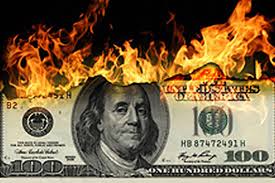More Than a Third of Entrepreneurs Are Making This Big Financial Mistake

Entrepreneurs fit the profile of the perfect retirement saver, in many ways. They’re proactive, they see the long-term benefits of small actions in the present, and many of them have above-average incomes. But according to new data, over a third of them aren’t taking the long view when it comes to their financial health.
Small business online community Manta recently surveyed 1,960 entrepreneurs within its network, and found that 34% don’t currently have a retirement plan. The most common reasons for not saving include not making “enough profit to save for retirement” or using “retirement savings to invest into my business.”
The Manta survey suggests that the savings practices of the self-employed haven’t changed much in recent years, even as the economy has grown. For instance, in 2013, TD Ameritrade found that 28% of small business owners did not contribute to any savings plan at all. Other surveys suggest that the growth of the freelance workforce has likely had some impact on these numbers; the growth of student debt is also restraining younger entrepreneurs’ ability to save.
Regardless of the cause, these numbers still represent a massive missed opportunity for millions. That’s because the retirement tools available to business owners—the solo 401k or SEP IRA—offer advantages that a regular 401(k) can’t.
Click here to read more from Time Inc.’s Looking Forward series.
Take the solo (or self-employed) 401k, which Manta’s survey found was the most popular option for business owners who did have a retirement plan. Solo 401(k)s are designed for entrepreneurs with no other employees. As employees of their business, owners are allowed to contribute up to $ 18,000 a year to an account for themselves, plus another $ 6,000 if they’re age 50 or over. But as an employer, there’s also the chance to contribute another 25% of annual income, up to an extra $ 53,000 a year.
Compare that to a regular 401k that you may get from an office job. Employees are limited to $ 18,000 a year plus the $ 6,000 catch-up contribution for those 50 and over. True, these plans often have an employee match for the percentage of your salary that you contribute, of anywhere from 4% to 7% of salary. For entrepreneurs there’s no employee match, unless you’re the one supplying it. But the other advantages make up for the absence of that perk.
SEP IRAs carry similar limits. (If you have employees, federal laws require you to provide them the same contribution percentage that you give yourself.) But the fact that those limits are so high, relatively speaking, can dramatically increase the amount you can save save long-term. Even putting away $ 20,000 a year ($ 1,666 a month) versus $ 18,000 a year ($ 1,500 a month) can generate $ 300,000 in extra savings over 30 years, based on historical returns. Or for those with lower incomes, saving $ 500 a month compared to zero, over 30 years, will still leave you with a retirement nest egg near $ 1 million. That sounds like a quality succession plan.
While entrepreneurs are known for putting their heart and soul into their company, they shouldn’t do so at the expense of the retirement plan. That’s just good business.



